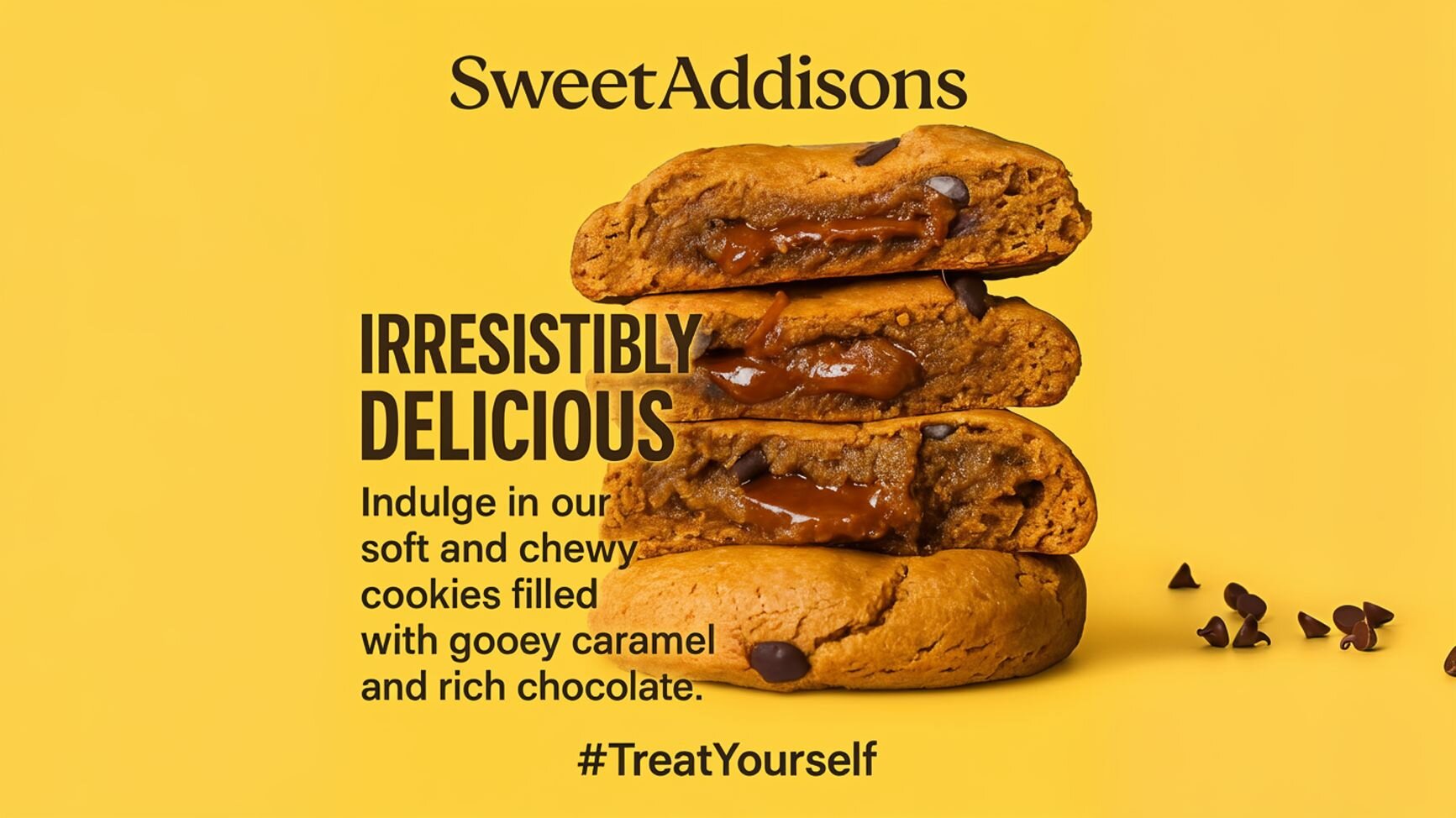In a world flooded with content and constant competition, growth-stage brands face a familiar challenge: how do you cut through the noise without losing what makes you you?
That’s where brand advertising comes in.
More than just a way to get your name out there, brand advertising is about building something bigger—trust, recognition, and long-term loyalty. It’s not a flashy shortcut or a one-off campaign. It’s a strategic investment in how people perceive, remember, and connect with your business.
Great brand advertising doesn’t just look good—it works hard behind the scenes to support sustainable growth. By aligning your messaging with your mission, your visuals with your values, and your story with your audience, you create more than attention.
Brand Advertising 101
Your brand advertising strategy is a long-term strategy focused on building awareness, trust, and emotional connection with your target audience. Instead of pushing a single product or promo, it tells the story of who you are and why you matter.
At its core, brand advertising helps you:
- Build lasting recognition and brand credibility in a crowded market
- Create an emotional connection that increases customer loyalty
- Differentiate your brand through clear values and identity
- Support growth by staying relevant beyond short-term trends
This is about making meaning, which is what keeps your brand top-of-mind and future-ready.
The Foundations of Effective Brand Advertising
Effective brand advertising is rooted in clarity, consistency, and connection. It’s more than just visuals or taglines, but rather focuses on how every piece of your brand works together to tell a story that resonates, builds trust, and supports long-term growth.
Here’s what that looks like in practice:
A Cohesive and Strong Brand Identity
Your brand identity should feel unmistakably you and instantly recognizable across every touchpoint. That includes:
- Visual elements like your logo, color palette, and typography
- Verbal cues like your slogan, tagline, or tone of voice
- Emotional resonance that reflects your values and appeals to your audience's mindset
Consistency across these elements isn’t just aesthetic—it’s strategic. It reinforces memory, builds familiarity, and creates trust over time.
A Distinct Voice and Message
Your brand voice isn’t just how you sound—it’s how you connect. It should be:
- Clear and authentic
- Rooted in your audience’s needs, pain points, and aspirations
- Consistent across platforms, from brand ads to social media to emails
Great messaging highlights your unique value and positions your brand as the solution without needing a hard sell.
Brand Consistency Across Channels
Customers don’t just see your brand in one place—they experience it across platforms. Your job is to make sure every one of those interactions feels aligned and intentional.
That means:
- Delivering a unified experience across web, social, email, and more
- Using consistent visuals and messaging across all touchpoints
- Staying true to your values, no matter the medium
Maintaining that kind of cohesion across every touchpoint takes more than intention; it takes the right tools. That’s where Icon’s AdGPT comes in, generating on-brand ad copy and creative briefs in minutes.
With built-in audience research, scriptwriting, and ad creation tools, Icon simplifies brand advertising, keeping voice and messaging consistent across campaigns without sacrificing quality or speed.
How Brand Advertising Builds Long-Term Value
Brand advertising is a launchpad for building a foundation of lasting connection, trust, and differentiation with your audience. When done right, it becomes a strategic lever for sustainable growth. Here’s how:
Creating Brand Awareness That Sticks
Before customers convert, they need to know you exist—and remember you.
Brand advertising helps enhance brand awareness by consistently reinforcing your visual and verbal identity across channels. Over time, this repetition makes your brand more familiar and recognizable, helping you show up at the right moment in the customer journey.
Familiarity builds trust—and when it’s time to make a purchase, people tend to choose the brands they know.
Building Trust and Loyalty
Awareness is only the beginning. The most enduring brands are those that spark an emotional connection.
Strategic brand advertising does this by sharing authentic, audience-relevant stories and delivering on your brand promise with consistency. When customers see their values reflected in your brand—and feel like they can count on you—they’re more likely to come back, even in highly competitive industries.
Standing Out Where it Matters
In a crowded market, meaningful differentiation is everything.
Brand ads give you the space to clarify what sets you apart, whether it’s your mission, your customer experience, or the quality of your product. It helps you communicate that value with confidence and shape a brand personality that resonates.
The goal isn’t just to be seen, it’s to be remembered, trusted, and chosen over and over again.
Building a Brand Campaign That Actually Works
A successful brand advertising campaign is a strategic process rooted in deep audience understanding, thoughtful creativity, and aligned execution. The right foundation can turn good ideas into high-impact brand stories that scale.
Step 1: Start With Real Audience Insights
Strong campaigns begin with clarity—about who you're speaking to, what matters to them, and how they experience the world.
That means going beyond surface-level demographics and digging into behavior, motivations, and intent. Audience research also includes assessing the competitive landscape so you can confidently carve out space where your brand stands apart.
This early-stage insight work is critical. It shapes everything that follows—from messaging to creative execution to channel strategy. And it ensures your advertising actually connects, rather than just adding noise.
Step 2: Define Measurable Goals That Align With Your Growth
Set clear goals to turn creative ideas into business outcomes. Whether you’re aiming to increase awareness, shift brand perception, or boost qualified traffic, defining SMART goals (specific, measurable, achievable, relevant, time-bound) keeps your campaign focused and results-oriented.
These objectives guide every decision—from creative development to media spend—so you’re not just launching ads, you’re building toward something bigger.
Step 3: Develop Creative That Speaks to Strategy
Effective brand creative doesn’t just look good—it works hard. It tells a story, captures attention, and reflects your brand’s voice and values with intention.
Your process needs to start with a concept that speaks directly to your audience and reflects what makes your brand worth choosing. From there, build out messaging, visuals, and formats tailored to the platforms you’ll be using.
Icon’s AdGPT feature can help speed up this process by generating on-brand copy and creative briefs in minutes. Paired with Creative Analytics, you can test and refine your content to maximize performance—without the guesswork.
Step 4: Choose the Channels That Make Sense for Your Brand
It’s not about being everywhere. It’s about being where it counts. That means understanding your audience’s media habits, considering your campaign goals, and selecting platforms that offer the best opportunity for connection.
For some brands, that might mean doubling down on digital—think paid social, display, or programmatic video. For others, it may involve a smart mix of digital and traditional media.
And if you’re juggling tools to manage all this—Icon brings them together. From creative generation to performance analytics and campaign optimization, it’s everything you need in one platform, for $39/month. No bouncing between apps. No missed opportunities.
How to Measure What Matters in Brand Advertising
Brand advertising is about building lasting value beyond just putting your name out there. But to do that, you need to measure what’s working, what’s not, and what’s driving meaningful growth.
That means going beyond vanity metrics and looking at indicators that show real audience connection, long-term brand strength, and strategic impact.
Brand Awareness
The first step in evaluating brand advertising is understanding how visible and memorable your brand is in the minds of your audience. These brand awareness metrics help quantify that:
- Brand recall: How many people think of your brand when prompted with a category or need?
- Brand recognition: Do they recognize your logo, color palette, or tagline when they see it?
- Top-of-mind awareness: When asked to list brands in your space, are you the first name they say?
You can gather these insights through brand lift surveys, social listening, or third-party brand tracking tools. While awareness alone isn’t the end goal, it’s a crucial foundation for everything that follows.
Engagement and Sentiment
A campaign that gets noticed is a good start—but one that sparks interaction and positive sentiment is even better.
Here’s what to track:
- Views and impressions: Are people seeing your content?
- Clicks and CTR: Are they taking action?
- Shares, comments, and saves: Are they finding it meaningful enough to engage with?
Equally important is how your audience feels about what they see. Sentiment analysis tools can help you assess the emotional tone of conversations around your brand—highlighting opportunities to lean into what's working or address areas that need attention.
This layer of data brings depth to your performance picture, helping you shape campaigns that resonate, not just reach.
Long-term Brand Equity
The most powerful brand advertising does more than drive traffic—it builds trust, preference, and loyalty over time. This is where brand equity comes in.
Some ways to measure brand equity include:
- Brand preference: Are more people choosing you over competitors?
- Brand loyalty: Are customers coming back, again and again?
- Price premium: Are people willing to pay more for your brand because of what it represents?
This kind of value doesn’t happen overnight. It’s the result of consistent messaging, relevant creative, and thoughtful positioning that evolves with your audience.
Examples of Great Brand Advertising
Good brand advertising is rooted in strategy, creativity, and deep collaboration. The most iconic campaigns in recent memory didn’t just go viral, they told a clear, compelling story, grounded in insight and built to last.
Below are standout examples that reflect the same principles we bring to every partnership: thoughtful strategy, intentional storytelling, and long-term brand building.
Nike: “You Can’t Stop Us”
Nike’s 2020 “You Can’t Stop Us” campaign is a powerful example of emotional storytelling done right. Featuring split-screen visuals and a narrative centered on unity, resilience, and inclusivity, the ad resonated across global audiences during a time of uncertainty.
Why it worked:
- It reinforced Nike’s core values through timely, relevant messaging.
- The creative execution was bold and seamless—both visually and emotionally.
- It wasn’t just an ad; it was a statement that deepened brand loyalty.
Takeaway: The best brand campaigns create connection by reflecting the cultural moment while staying true to the brand’s long-term mission.
Apple: “Shot on iPhone”
Apple’s long-running “Shot on iPhone” campaign is a brilliant example of user-generated content scaled into a global brand asset. By showcasing real photography captured by iPhone users, Apple highlighted product quality without ever having to say it outright.
Why it worked:
- It built trust by putting users at the center of the story.
- It showcased product capabilities in an authentic, artful way.
- It evolved over time, adapting to new product features while keeping a consistent tone.
Takeaway: Long-term campaigns that evolve with your product—and invite your audience in—create sustainable, scalable value.
Dove: “Real Beauty”
Dove’s “Real Beauty” campaign redefined how beauty brands communicate. Instead of airbrushed perfection, Dove leaned into authenticity, representation, and body positivity—sparking meaningful conversations around self-esteem and societal standards.
Why it worked:
- It disrupted industry norms with a values-driven message.
- It reflected real audience desires and cultural shifts.
- It positioned Dove not just as a product, but as a purpose-led brand.
Takeaway: When your advertising efforts reflect what your audience truly cares about, it becomes more than a marketing strategy—it becomes movement.
What These Campaigns Have in Common
While each of these famous brand advertising examples had a distinct message and medium, they all share key strategic foundations:
- Clarity of purpose: Every message ties back to a particular brand mission.
- Audience empathy: Deep understanding of what the audience cares about, feels, and needs.
- Creative integrity: Visuals, copy, and platform choice all work together to deliver a cohesive experience.
- Long-term thinking: These weren’t one-off stunts—they were part of a bigger story.
Why Brand Advertising Still Matters
Brand advertising isn’t just about visibility. It’s about meaning, connection, and long-term value. When done right, it goes beyond introducing your brand, flowing into building trust, deepening affinity, and becoming a powerful driver of growth over time.
The most impactful campaigns are rooted in clear objectives, informed by real audience insight, and brought to life through creative that resonates. They show up in the right places at the right times—and they evolve with your brand. Strategic measurement keeps them on track. A flexible, collaborative approach helps them scale.
If you’re ready to turn your brand into a long-term growth engine, Icon is ready to get to work, fast and furious, but never skimping on quality.
Build something lasting and unforgettable. Try Icon today to get started.
Frequently Asked Questions (FAQ):
What is the difference between marketing and branding?
Marketing focuses on promoting and selling products or services to your audience through tactics like advertising and promotions. Branding, however, is about shaping your business's identity, values, and emotional connection with customers. While marketing efforts drive immediate action, branding builds long-term relationships and reputation.
What is brand advertising with an example?
Brand advertising aims to build long-term awareness and emotional connections with your audience. A classic example is Coca-Cola’s holiday ads, which emphasize feelings of joy and togetherness rather than just promoting the product. These brand ads help strengthen the brand’s identity and keep it top-of-mind for consumers.
What are the 4 Ps of branding?
The 4 Ps of branding include Product (what you're offering), Price (the value and price point), Place (distribution channels), and Promotion (how you get your message across). Together, they help position your brand for growth.
How do you make a brand advertisement?
Creating a brand ad involves understanding your audience, defining your message, crafting compelling content, choosing the right platforms, and measuring performance to optimize future efforts. It's all about connecting emotionally with your audience and reinforcing a consistent brand identity.
















